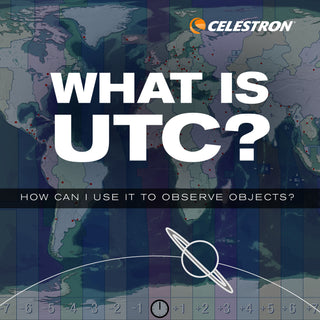Deep Sky Objects – Nebulae, Galaxies, Star Clusters
November 18, 2021
 Our night sky is full of magnificent deep-sky objects to observe—and we want to help you see as many as possible! If you’re new to astronomy, you may be wondering what the different celestial object classifications mean. In this guide, we’ll explain the differences among nebulae, galaxies, star clusters, and more. After reading about these different deep-sky objects, see if you can locate and identify them with your telescope.
Our night sky is full of magnificent deep-sky objects to observe—and we want to help you see as many as possible! If you’re new to astronomy, you may be wondering what the different celestial object classifications mean. In this guide, we’ll explain the differences among nebulae, galaxies, star clusters, and more. After reading about these different deep-sky objects, see if you can locate and identify them with your telescope.
TYPES OF NEBULAE
 |
Emission Nebula An emission nebula is an interstellar cloud of new stars. Its high-temperature gas emits ultraviolet light of various wavelengths. Most of these nebulae appear red due to their composition of >90% hydrogen, though they can also appear blue or green depending on the other elements present. Many emission nebulae are located close to reflection and absorption nebulae, such as the Trifid Nebula. |
Famous Emission Nebulae: Orion Nebula (M42), Omega Nebula (M17), North American Nebula (NGC 7000), Witch's Broom Nebula (NGC 6960), Lagoon Nebula (M8 (NGC 6523)), Carina Nebula (NGC 3372), Monkey Hear Nebula (NGC 2174), and NGC 2313. |
 |
Reflection Nebula A reflection nebula is an interstellar cloud of gas and dust that reflects the light from a nearby star or group of stars. These nebulae usually appear blue because of the way they scatter the light that falls on them. You’ll often find reflection nebulae paired with emission nebulae in the night sky. They can be sites of new star formation. |
Famous Reflection Nebulae: Pleiades (M45), M78, IC 4603, 4604, and 4605, Witch Head Nebula (IC 2118), Trifid Nebula (M20), and IC 2631. |
|
|
Absorption or Dark Nebula A dark nebula or absorption nebula is a highly dense interstellar cloud that obscures the visible wavelengths of light from objects behind it, such as stars and emission or reflection nebulae. An absorption nebula is a cloud of interstellar dust in the coldest, densest parts of molecular clouds, a key location for star formation. The shape of the nebulae has no clearly defined form or boundary. Absorption nebulae are very similar to reflection nebulae in structure but differ primarily in the location of the light source. You’ll usually find absorption nebulae near emission or reflection nebulae. |
Famous Absorption/Dark Nebulae: Horsehead Nebula (Barnard 33), LDN 1768, LDN1774, LDN 483, and Lupus 4. |
 |
Supernova Remnant A supernova remnant forms when a star explodes at the end of its life, spewing large amounts of its matter outwards into space. The supernova cloud glows with the remains of the star that created it. Supernova remnants play an essential role in shaping our understanding of our galaxy. |
Famous Supernova Remnants: Crab Nebula (M1), SN 1987A, SN 1572, and Witch's Broom Nebula (NGC 6960). |
 |
Planetary Nebula A planetary nebula is a region of cosmic gas and dust formed from the cast-off outer layers of a low mass dying star. Using early telescopes, some of the first astronomers observed that these nebulae had a “planet-like” round shape, giving rise to the name “planetary nebula.” Today, most astronomers believe the Sun will form a planetary nebula at the end of its life cycle. |
Famous Planetary Nebulae: Ring Nebula (M57), Dumbbell Nebula (M27), Cat's Eye Nebula (NGC 6543), Helix Nebula (NGC 7293), and Eskimo Nebula (NGC 2392). |
Use our Messier Catalog for Nebulae to help you find the nebulae we referenced above.
TYPES OF GALAXIES
A galaxy is a gravitationally bound system of stars, stellar remnants, interstellar gas, dust, and dark matter. Galaxies are classified by shape and categorized into four major types: spiral, barred, elliptical, and irregular.
 |
Spiral Galaxy Roughly 60% of the galaxies we can observe are spiral galaxies. This category is named for its signature look: stars, gas, and dust gather into a spiral, flat disk with a bulge in the center and arms reaching outward. A spiral galaxy’s arms contain a wealth of gas and dust, making them an ideal location for new star formation. |
Famous Spiral Galaxies: Pinwheel Galaxy (M101 (NGC 5457)), Sunflower Galaxy (M63 (NGC 5055)), Triangulum Galaxy (M33 (NGC 598)), and Whirlpool Galaxy (M51a (NGC 5194)). |
 |
Elliptical Galaxy About 10% of the galaxies we can observe are elliptical galaxies. They’re usually comprised of ancient stars or stars with low mass. They appear as elongated spheres, smooth and nearly featureless. Elliptical galaxies are most common near the center of clusters. Elliptical galaxies contain little dust or gas between their stars so that no new stars will form here. |
Famous Elliptical Galaxies: M49, M59, M60 (NGC 4649), M87 (NGC 4486), IC 1101, and Maffei 1. |
 |
Irregular Galaxy Roughly 10% of the galaxies we can see are irregular galaxies. As the name suggests, they lack a distinct shape or form. Irregular galaxies were once spiral or elliptical, but they were disturbed, causing them to take on a slightly “disheveled” look. Irregular galaxies are usually relatively small, about one-tenth the size of the Milky Way. |
Famous Irregular Galaxies: IC 3583, NGC 2337, UGC 4459, PGC 18431, and PGC 16389. |
 |
Barred Spiral Galaxy A barred spiral galaxy is a type of spiral galaxy. However, what sets it apart is a bar of bright stars that forms a line along the center and extends out in the spiral galaxy’s arms. More than two-thirds of spiral galaxies are barred spiral galaxies. The bar and arms are hotspots of activity, including star formation. |
Famous Barred Spiral Galaxies: Andromeda Galaxy (M31), Milky Way, NGC 1300, IC 5201, and NGC 7640. |
Use our Messier Catalog for Galaxies to help you find the galaxies we referenced above.
TYPES OF STAR CLUSTERS
Star clusters are large groupings of stars that appear close together. Astronomers classify them according to the type of gravitational attraction among the stars. There are two major types: globular star clusters and open star clusters.
 |
Globular Clusters Globular clusters are spherical collections of stars that orbit a galactic core. The gravitational bonds within clusters give these objects their unique shape. Globular clusters are very symmetrical and are most dense toward their centers. They orbit in the halo of our galaxy, expanding above and below the galactic center. |
Famous Globular Clusters: Great Globular Cluster of Hercules (M13), M5, M3, M92 Omega Centauri, M13, 47 Tuc, and M22. |
 |
Open Star Cluster An open star cluster consists of up to a few thousand stars formed from the same giant molecular cloud that are still loosely gravitationally bound to one another. Open star clusters are more irregular in shape than globular clusters and tend to orbit within our galaxy’s disk. |
Famous Open Star Clusters: Pleiades (M45), Wild Duck Cluster (M11), Beehive Cluster (M44), Double Cluster (Caldwell 14), h Persei (NGC 869), and NGC 884. |
Use our Messier Catalog for Globular Clusters and Messier Catalog for Open Star Clusters to help you find the clusters we referenced above. This document contains the complete Messier Objects list for easy referencing.
Another knowledgebase article you might like: Try These 12 Things with your New Telescope



























